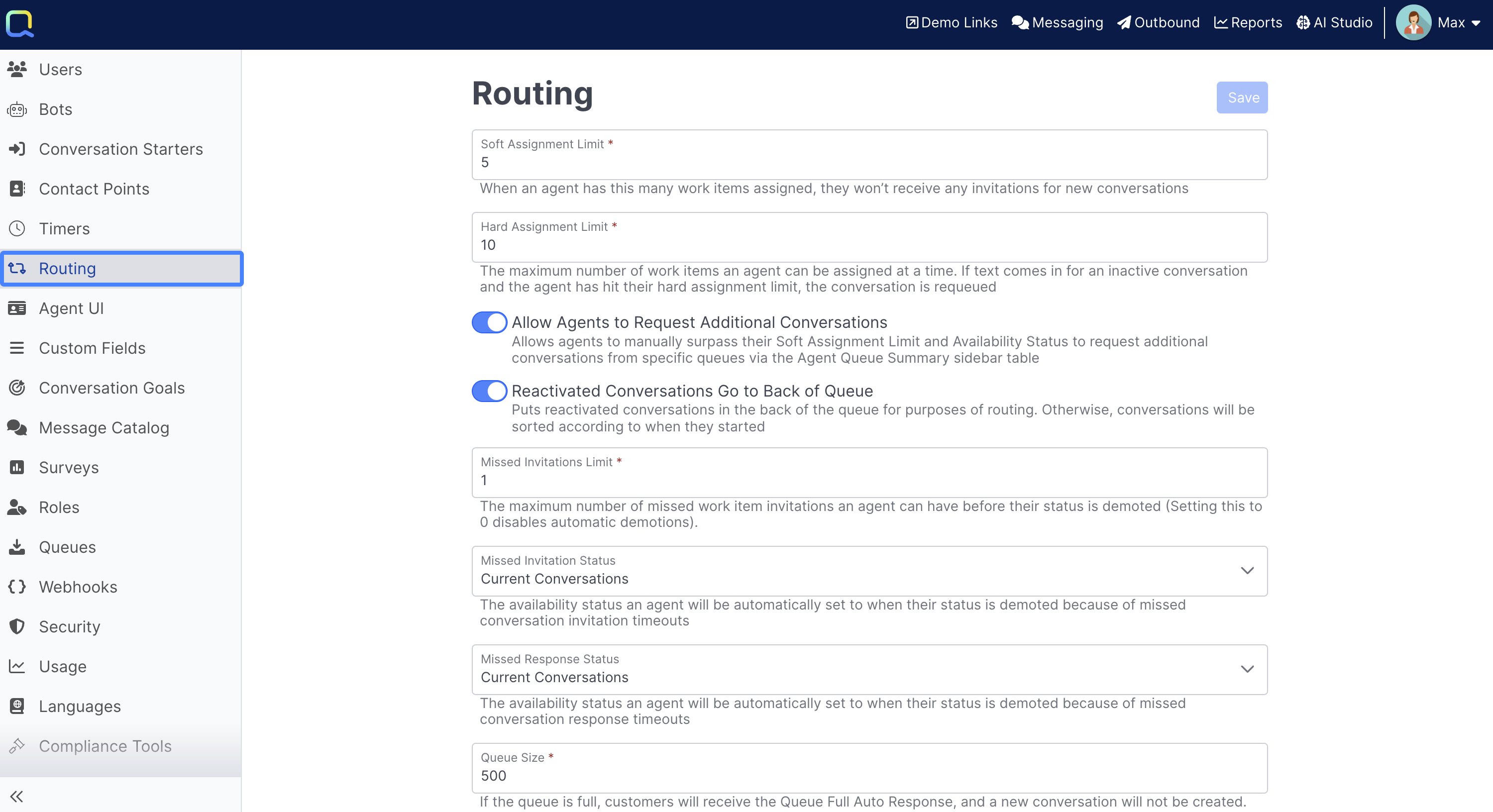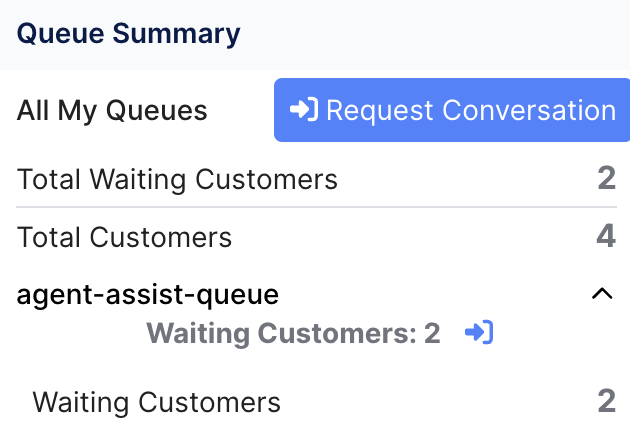Routing
Overview
Both individual agents, and an organization’s entire staff, have a finite capacity. Routing settings allow an organization to match assigned load to capacity.

Soft Assignment Limit
Setting a limit on the number of active conversations an agent can maintain allows for timely responses and avoids allowing agents to hold more conversations than they can maintain. This setting instructs the system not to offer new conversations to an agent with this many active work items.
Hard Assignment Limit
Inactive conversations assigned to an agent may reactivate at any time. When enough reactivate to reach the hard limit number, any further Inactive conversations that become active will be re-queued.
Allow Agents to Request Additional Conversations
When enabled, agents must display the Agent Queue Summary Table see User Settings Sidebar to have the Request Conversations button displayed. If there are conversations queued for any queue the agent covers, this button will be displayed for the agent, allowing them to request a conversation, even if the agent has reached the Soft Assignment Limit.

Reactivated Conversations Go to Back of Queue
By default, if a conversation is re-queued, it becomes the last conversation in queue. It will not be offered to an agent until all other conversations in queue have been offered and routed.
Turning this off would place re-queued conversations at the beginning of the queue, making them the next conversation offered to an agent. The customer experience chosen depends upon the workflow of conversations. If the desire is to allow conversations that were previously engaged to be re-engaged sooner, this setting should be OFF. If new conversations are of higher priority, this setting should be ON.
Missed Invitations Limit
Conversations are offered to the agent via invitation. A missed invitation my indicate the agent is too busy or otherwise occupied. The default behavior of the system is to place an agent that misses an invitation into Current Conversation status, so that no new conversations are offered. This setting allows the number of missed invitations which may occur before the status change is made. The status change may be disabled completely by setting this field to 0.
Queue Size
New conversations not routed to an agent are instead held in queue. The queue would be considered a backlog for all agents and should be set based upon expected throughput of the agent pool, and the acceptable time customers may wait until a conversation is routed to an agent.
When the queue size value is reached, all new conversations receive the When the Queue is Full message (see AUTO RESPONSES above) and then terminated. A too high value could create an insurmountable backlog and cause customers to wait too long for an agent response. Setting the value too low would cause conversations to be discarded when they could have reached an agent.
Show Decline Button
When an agent is offered a conversation, the Decline button may be hidden based upon this switch. With no ability to decline, an agent must allow the invitation to expire to avoid accepting the conversation (see TIMERS above).
Flash Conversation Tab on New Conversation
Provides a visual indicator to agents when a new conversation is being offered. This can be beneficial to multitasking agents or distracting to agents working continuously in the Quiq Messaging console.
Sticky Routing Window
Agents can likely recall their recent interactions with a customer. Routing new conversations to the last agent to converse with the customer puts this recollection to use, leading to faster handle times and higher customer satisfaction. This is a timer setting in hours from the time the last conversation from the customer ended. The receiving agent must have availability for the work item, and Sticky Routing will not surpass the configured Hard Assignment Limit. If the last agent cannot accept the work item, it will be routed to the next available agent.
Work Item Weights
Certain platforms or channels drive different conversation behaviors. SMS is often more asynchronous in nature, where Web Chat is often more synchronous. Synchronous channels may have more weight assigned as they have higher demand upon the agent for responsiveness. Assign weights here based upon the experience of past conversations on the given platform, and agent capability. Note that weights assigned here impact the Soft and Hard Assignment Limits described above. Platforms not configured may not be edited.
Updated about 1 month ago
